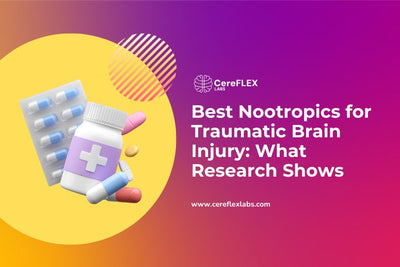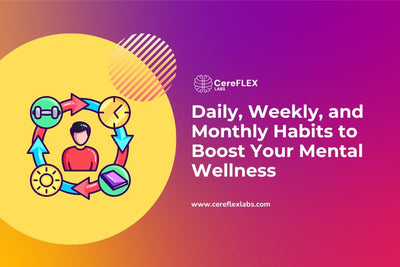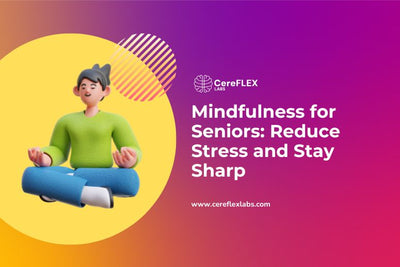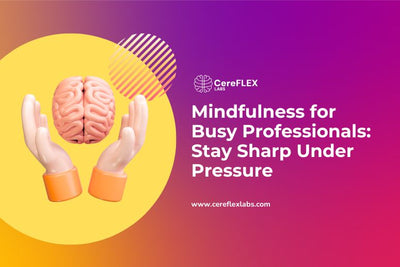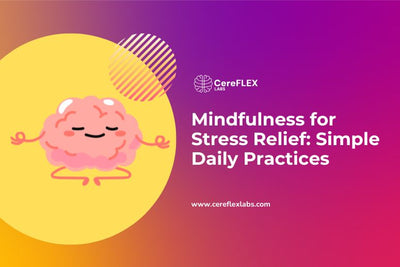Nootropics—whether natural or synthetic—are used to enhance focus, memory, and mental clarity. But what happens when they’re combined with prescription medications?
Millions of Canadians rely on prescriptions for conditions like anxiety, ADHD, depression, and sleep disorders. Adding nootropics into the mix can affect brain chemistry in unexpected ways. Even minor overlaps in how these substances act on neurotransmitters can lead to enhanced effects—or unwanted side effects.
Understanding how nootropics interact with common medications is essential if you want to boost cognitive function without compromising your health. In this guide, we’ll explore potential risks, safer alternatives, and smart tips for stacking nootropics responsibly.
Here is the Quick Answer |
|
Nootropics can enhance focus and memory, but when mixed with prescription meds—like SSRIs, ADHD stimulants, or sleep aids—they may amplify side effects, reduce drug effectiveness, or pose health risks. Start low, avoid stacking, and consult your doctor. Safer nootropics like L-theanine or Lion’s Mane may be suitable, but careful planning is key. |

Why Nootropic–Medication Interactions Matter
Nootropics enhance brain function by targeting key neurotransmitters—dopamine, serotonin, GABA, and acetylcholine. Some increase mental clarity by boosting neurotransmitter levels; others support neuroplasticity, reduce inflammation, or improve brain wave activity.
On their own, these effects may seem manageable. But when nootropics are combined with prescription medications—many of which act on the same systems—unexpected reactions can occur.
Most common prescriptions, like antidepressants, ADHD meds, or sleep aids, already influence brain chemistry. If a nootropic overlaps by targeting the same pathways, the result might be synergy—or conflict.
Take modafinil, for instance. It boosts dopamine by blocking its reuptake. If someone is also taking a stimulant like Adderall or a dopaminergic antidepressant, the combination can cause overstimulation, anxiety, or sleep disturbances.
These effects aren’t always immediate or obvious. But the more similar the mechanism, the greater the risk. That’s why understanding how these substances interact is critical—especially for those already on medication.
Common Prescription Medications That May Interact with Nootropics
Combining nootropics with prescription drugs can pose risks, especially when both affect similar brain systems. Below are some common medication categories where interactions can occur—and why they matter.

1. Antidepressants (SSRIs & SNRIs)
Antidepressants and nootropics both influence neurotransmitters. When combined, they may:
⚠️ Duplicate effects, overloading systems like serotonin.
⚠️ Oppose each other, reducing medication effectiveness.
⚠️ Alter how the body processes either substance, affecting dosage levels.
These interactions can lead to side effects—or more serious outcomes like serotonin syndrome.
SSRIs (e.g., sertraline, fluoxetine, citalopram) work by boosting serotonin. But many nootropics also influence serotonin—directly or indirectly.
For instance, St. John’s Wort may dangerously amplify serotonin when paired with SSRIs. Even milder mood-boosting nootropics can tip the balance.
To reduce risk:
✔ Avoid mood-enhancing nootropics.
✔ Choose brain support compounds that work via other pathways, like ashwagandha (for cortisol) or lion’s mane (for neuroplasticity).
SNRIs (e.g., venlafaxine, duloxetine) impact both serotonin and norepinephrine. This dual action increases their potency—and the chance of interaction.
Avoid nootropics marketed for mood support, and instead consider options that promote mental energy or clarity without affecting emotion-regulating chemicals.
2. Atypical Antidepressants
Drugs like bupropion, trazodone, and nefazodone don’t follow a standard mechanism. They may act on multiple systems, including dopamine, serotonin, or norepinephrine.
This makes their interactions with nootropics harder to predict.
Example: Bupropion affects dopamine. Stacking it with dopaminergic nootropics (like racetams or modafinil) may increase the risk of agitation, insomnia, or emotional volatility.
➤ Best practice: Speak with your healthcare provider before combining any nootropic with atypical antidepressants.

3. ADHD Medications (Stimulants)
Medications like Adderall and Ritalin increase dopamine and norepinephrine to boost focus and attention.
Adding stimulant-like nootropics (e.g., caffeine or phenylpiracetam) can:
⚠️ Cause overstimulation
⚠️ Disrupt sleep
⚠️ Raise heart rate or blood pressure
These effects may reduce medication efficacy or lead to emotional instability in sensitive users.
4. Sleep Medications and Sedatives
Drugs like benzodiazepines (e.g., clonazepam, diazepam) and trazodone work by enhancing GABA—a calming neurotransmitter.
Some nootropics, such as phenibut or high-dose L-theanine, also target GABA. When combined:
⚠️ Sedation may become too strong
⚠️ Risk of confusion, drowsiness, or respiratory depression increases
These combos should only be considered under strict medical supervision.
5. Blood Pressure Medications
Nootropics aren’t just about the brain—they can impact the heart too.
Stimulant nootropics like modafinil and caffeine can:
⚠️ Raise blood pressure
⚠️ Undermine the effects of medications like amlodipine or beta blockers
This is especially risky for those with existing heart conditions or hypertension.
6. Blood Thinners
Drugs like Warfarin or low-dose aspirin reduce blood clotting risk. But natural nootropics like ginkgo biloba can also thin the blood.
Combining the two may increase:
⚠️ Bruising
⚠️ Nosebleeds
⚠️ Risk of internal bleeding
Always disclose herbal supplements to your doctor if you’re on blood thinners.

Signs of a Negative Interaction
When nootropics and prescription medications don’t mix well, your body usually tells you—sometimes subtly, sometimes urgently. These interactions may develop quickly or gradually, depending on the compounds involved and your personal neurochemistry.
Here’s what to watch for:
Increased Anxiety or Irritability
May signal overstimulation or neurotransmitter imbalance—especially if multiple dopamine-boosting compounds are combined.
Heart Palpitations or Racing Heartbeat
Common with stimulant overlaps (e.g., combining Adderall with caffeine-based nootropics), which can strain the cardiovascular system.
Nausea or Dizziness
These symptoms may occur when the nervous system or gut is overwhelmed by interacting compounds.
Sleep Disruptions or Insomnia
Often caused by excess dopamine, norepinephrine, or serotonin, particularly when stimulating nootropics are taken too late in the day.
Emotional Volatility
Watch for mood swings, low frustration tolerance, or unexpected sadness—especially if you’re stacking mood-acting compounds.
Potential Serotonin Syndrome
A medical emergency. Warning signs include shivering, fever, muscle rigidity, confusion, and rapid heartbeat. Seek immediate medical help if these occur after combining serotonergic agents.
➤ Tip: If you experience any of these signs after starting a new nootropic—especially while on medication—stop immediately and consult your healthcare provider.
How to Take Nootropics Safely with Medications
If you’re already on prescription drugs, adding nootropics should never be an afterthought. Even natural supplements can alter how medications behave in your body. The key is to approach stacking cautiously—with a plan, not guesswork.
Follow these best practices to stay safe:

Consult Your Doctor or Pharmacist
Before starting any nootropic—natural or synthetic—talk to a qualified healthcare provider. They can flag potential interactions, recommend dosage adjustments, and ensure your medications remain effective.
Avoid Combining Multiple Nootropics
Stacking several new compounds at once can blur cause-and-effect and raise your risk of side effects. If you’re taking prescription meds, introduce nootropics one at a time and wait several days before adding another.
Start Low and Go Slow
Always begin with the lowest recommended dose. Observe your mood, sleep, focus, and energy for a few days. This approach helps you spot subtle shifts before they escalate.
Consider Timing and Spacing
Taking certain nootropics and medications together may affect absorption. Space them out by a few hours to reduce overlap.
For example: If you’re on a morning ADHD stimulant, try taking calming nootropics like L-theanine in the afternoon or evening.

Keep a Reaction Log
Track when and what you take—along with how you feel. Journaling helps you identify patterns, troubleshoot side effects, and communicate clearly with your doctor if needed.
Conclusion
Nootropics have the potential to improve focus, memory, and brain health—but combining them with prescription medications adds complexity. These interactions can be helpful, harmful, or simply unpredictable, depending on how the substances affect your brain chemistry.
The key is informed caution. Whether you’re managing depression, ADHD, anxiety, or sleep disorders, understanding how your medications work—and how nootropics might interact with them—is essential.
At Cereflex Labs, we believe smart supplementation should be both effective and safe. That’s why we created the AM/PM Protocol, a two-part brain support system designed to complement, not conflict with, your existing health plan:
- AM: Brain Morning Formula – Helps boost clarity, memory, and mental energy to power your day.
- PM: Cognitive Support Evening Formula – Helps calm the mind and supports overnight recovery.
Unlike aggressive synthetic nootropics or unpredictable DIY stacks, this carefully designed protocol uses evidence-backed nutrients and adaptogens to support cognition without overloading the nervous system. It’s a sustainable way to elevate your mental edge—no prescription required.

